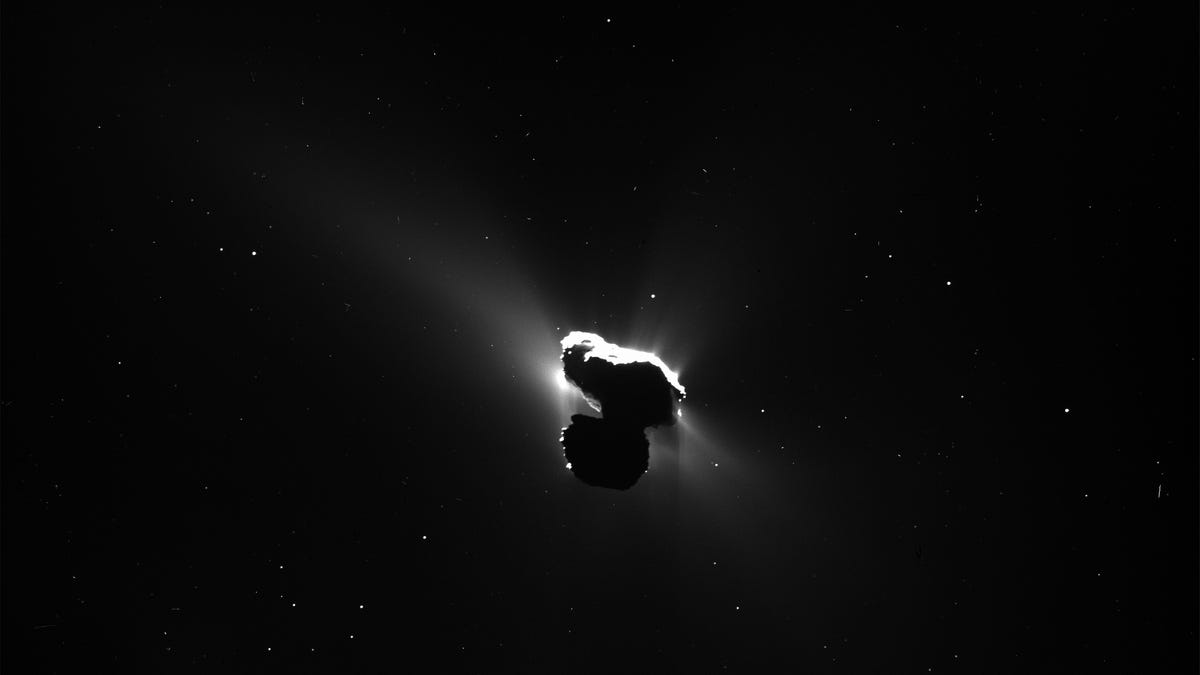Rosetta's days are finally numbered as countdown to comet crash commences
On September 30, the European Space Agency will send the Rosetta spacecraft crashing into Comet 67P/Churyumov-Gerasimenko.
All things must come to an end, and so it is for Rosetta, the spacecraft in orbit around Comet 67P/Churyumov-Gerasimenko. The European Space Agency has officially announced a date for the mission's conclusion: September 30, 2016.
On that date, the orbiter will join the Philae lander on the comet's surface, but not with a gentle touchdown. The Rosetta team is going to send the orbiter plummeting into Comet 67P/C-G, seizing what could be its last chance to collect valuable data, and snap high-resolution images that it would have no other way of obtaining.
Rosetta launched on March 2, 2004, and arrived in orbit around Comet 67P/C-G on August 6, 2014. This was no mean feat. The comet travels on a wide elliptical orbit, so the ESA had to carefully calculate how fast Rosetta could travel, then figure out where its path and the comet's path would intersect.
The Rosetta orbiter, taking photos from a position in orbit around the comet, and the Philae lander, collecting data on the comet's surface, provided a wealth of new information about Comet 67P that helped scientists understand a lot more about comets in general.
Comet 67P is currently travelling back out towards the farthest point from the sun in its orbit. At that distance, the power Rosetta's solar cells can collect from the sun is significantly reduced. Putting the orbiter into hibernation was one option, but there is no guarantee it could even get enough power to stay warm enough to survive.
So the Rosetta team has decided that the mission must come to an end. But crashing an orbiter into it's surface, though, is way trickier than it sounds.
"Planning this phase is in fact far more complex than it was for Philae's landing. The last six weeks will be particularly challenging as we fly eccentric orbits around the comet -- in many ways this will be even riskier than the final descent itself," explained ESA Rosetta spacecraft manager Sylvain Lodiot.
Once Rosetta meets the surface of Comet 67P, the spacecraft will no longer be able to communicate with Earth. However, this doesn't mean that there will be no more discoveries.
"September 30 will mark the end of spacecraft operations, but the beginning of the phase where the full focus of the teams will be on science," said ESA Rosetta scientist Matt Taylor. "That is what the Rosetta mission was launched for and we have years of work ahead of us."


